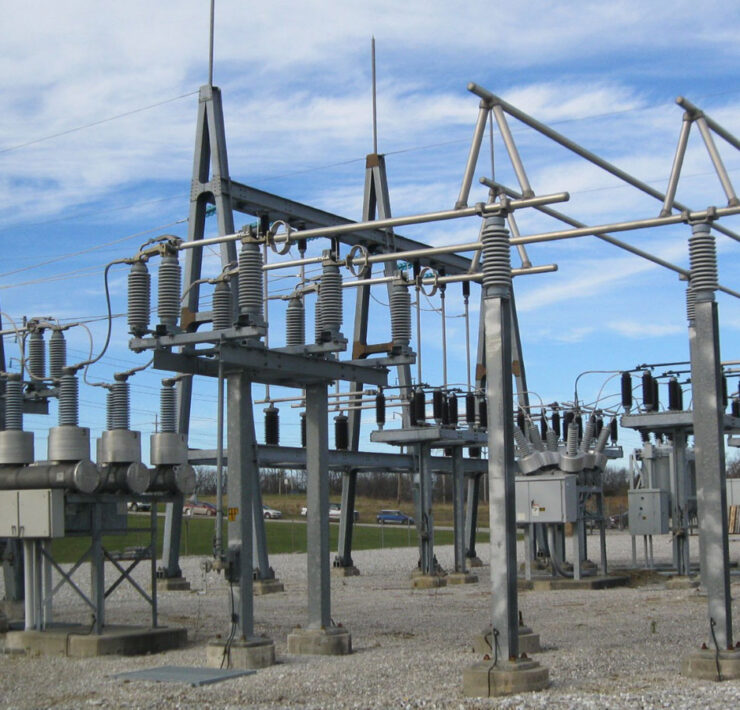Power House: Columbia’s Water & Light Advisory Board
It isn’t often that one thinks of all the moving parts that ensure water runs when you turn the tap and the lights come on when you flip the switch. One might think about it, though, if either didn’t work.
Providing reliable utility services to Columbia’s citizens is the job of the city’s Water and Light Department. But the department doesn’t operate alone. The Water and Light Advisory Board acts as a middleman between the department — the administrative body — and the City Council, which establishes policies and laws. But what are the powers and functions of the Water and Light Advisory Board? Who are its members? And how does it affect us every day?
What is the Advisory Board?
According to Tad Johnsen, director of the Water and Light Department, the Water and Light Advisory Board is one of only a handful of boards included in the city charter. The charter states that the five-member board must be appointed by the City Council to serve four-year terms.
The board meets the first Wednesday of each month, but being a part of the board is a much greater time commitment than the three-hour meetings. Connie Kacprowicz, the spokesperson for Water and Light, estimates that each board member spends an additional seven hours each month in preparation.
“Utility is a big business,” Johnsen says. “You have to understand the lingo: What’s capacity? What’s energy? How is a rate structure put together?”
“The Advisory Board gives the council a group that’s focused just on what we do,” he says.
Johnsen, who was selected by the city manager to lead the department, must be “trained and experienced in the operation and management of public utilities…” according to the charter.
The board, however, has less stringent requirements. The charter states members must be qualified voters, residents of Columbia for at least one year, and they must also be “sympathetic” to municipal operation of the water and light system.
The third qualification is up for interpretation.
To Johnsen it means they must be interested enough in the topics of water and light to spend the time to learn how it works.
Board Chairman John T. Conway, P.E.,, believes it means representing the public’s viewpoints and to be sympathetic to their plight. “We don’t have stakeholders other than the general public and the council,” he says.
“I think, too, as I reflect over the time I’ve been a part of the board, that there needs to be representation of the business community in this city. That’s kind of the driving force of our community, and these utilities are important to them.”
To former board member of eight years Bob Roper, it means being sympathetic to the needs of the ratepayer.
Roper thinks the fourth qualification outlined in the charter is vitally important: respect for “the policies…to ensure the sound and efficient management of said system.”
“You not only have to be sympathetic, but you have to do it in an efficient management system,” he says. “That was the springboard for how I looked at my job.”
The powers of the board are solely advisory. Any member can call the director of Water and Light and put an item on the agenda, but most initiatives come from Johnsen and his staff.
There’s an annual agenda including items the board must address every year, such as capital improvement projects and the renewable energy report. Financials, quarterly reports and any budgetary purchases that must be approved by the City Council are included on every agenda.
“Typically, we drive the agenda on items we need their support on,” Johnsen says.
“It comes together organically,” Kacprowicz says. “Projects come up, and we just have to break down the process for completing that project.”
Conway says they’re also funneled information from other boards and commissions such as the Environment and Energy Commission. He says the board might also be given initiatives by council members.
“For example, Barbara Hoppe wanted to look into the budget, just to start a dialogue of what we can do,” he says.
The board itself, however, isn’t designed to bring initiatives to the council, Johnsen says. “They’re supposed to be experts with community involvement in Water and Light.”
Johnsen and Conway agree that as long as the department staff and the board concur on recommendations, the council almost always approves its recommendations. The department can still bring recommendations not approved by the board to the council, “but we have to understand it’s more onerous to explain why this is a good thing,” Johnsen says, adding that those instances are rare. He says he can’t recall instances when the board has brought recommendations to council that the department didn’t agree with, though the department can send its views for or against any board recommendations to council.
“We need to recognize that the department staff is the expert,” Conway says.
Who are its members?
The board’s current members and terms are: Chairman John Conway, 2014; Henry “Hank” Ottinger, 2015; Vice-Chairman Dick Parker, 2015; Tom O’Connor, 2016; and Jack Clark, 2017.
Although the requirements outlined in the charter are slim, Conway says it’s important to have a longer history in the community than the required one year.
“You have to spend an amount of time here long enough to get a flavor for what’s important to the citizens and how the community engages with city government,” he says. “You have to be willing to learn and put in the time.” Conway has spent countless hours earning a public power governance certificate from the American Public Power Association. He was the first in the nation to complete the two-year program. All board members are invited to participate in webinars, conferences and meetings from the APPA and other industry groups.
On a local level, the department regularly sends reading materials to the board. Sometimes it’s as short as a single-page memo; other times it might be a 120-page document.
“Some council members indicated we should have regular changeover of members, but we don’t consider that an advantage because it takes a lot of investment to get someone up to speed,” Johnsen says.
He estimates that most board members serve between 10 and 15 years, and it takes a couple years to learn the board’s nuances.
“For those first couple of years, you better be a good listener,” Conway says. “Most board members come with an expertise in one part or aspect of Water and Light.”
For Johnsen, variety is the quality he most prefers (though the department plays no role in appointments). “We’ve had people from finance, engineering consultants, the environmental side…” he says. “One thing we try to do is have people from different backgrounds.”
Conway has a civil engineering background and more than 20 years of experience on the board. On his application in 2010, he also lists public finance experience, having lived in the community for more than 40 years, and his leadership and management experience from the private sector.
Ottinger retired as an associate professor at Westminster College and has lived in Columbia since 1962. He’s served on various mayor-appointed task forces, according to his 2011 application. He has chaired the local Sierra Club several times in the past, and he remains a member of that group. His listed qualifications include having served as a member of two Water and Light director searches and the task force for the Integrated Resource Plan for Columbia’s future energy use.
“Ottinger brings a dimension of environmental concern,” Conway says.
Parker is in his second term on the board.
“Parker is a scientist,” Conway says. “He can delve into the nitty gritty details.” He has a Ph. D. in zoology and has served on the Environment and Energy Commission and Integrated Resource Plan committee.
“Parker was a professor and an academic, and he’s focused on some conservation approaches,” Johnsen says.
O’Connor has served on the advisory board since 2006, was a part of the source water protection task force and owns H2O’C Engineering, where he specializes in water quality and treatment. He cites his wish to serve as his “ongoing interest in our water and energy issues and sustainability of supplies.”
Conway adds that, due to his business ownership, he also brings an element of business experience to the group.
Clark, who owns DSC Advisory Services, has a background in long-range planning, a master’s degree in urban affairs and has served on the comprehensive plan task force. It was his interest in investments in infrastructure that prompted him to serve on the board, according to his application.
“[Clark] is very interested in seeing photovoltaics on our system,” Johnsen adds.
Conway says he thinks finances are among the current board’s struggles.
“I think if you asked them which dimension they struggle with most, well, it wouldn’t be uncommon for them to say it took them longer to get a grasp on the department finances,” he says.
“They certainly have to understand the financials: how bonds work, what a credit rating is, how we establish that,” Johnsen says. To learn more about the financial side, the board completed a “Finance 101” session in May of 2012, according to the Annual Water and Light Advisory Board Report, which covers the last half of 2012 and the first half of 2013.
“I was very much aligned with being a financial watchdog,” says Roper, who was formerly an executive vice president of Boone County National Bank and president of Central Trust and Investment Co., an affiliate. “I felt that I represented the common ratepayer on that board.”
“[The department is] very good about answering questions and presenting financial statements in whatever detail we wanted,” he says. “With my background in banking, I tended to ask a lot of questions on that.”
How does it affect us every day?
Despite a 5 percent increase in water rates and a 1.5 percent increase in electric rates in October 2012, the annual report states that customer satisfaction improved in 2012 and surpassed national benchmarks.
The report also noted that the 2012 fiscal year demand side management and demand reduction report stated that energy-efficiency programs saved the city more than 4 million kilowatt hours.
According to the Integrated Resource Plan of 2008, which is an independent assessment of Columbia’s future energy needs completed by an outside consultant, energy efficiency was a top priority. The report was updated in 2013 and suggested the pursuit of wind energy and natural gas.
Even with renewable energy spending down 37 percent from 2012 to 2013, renewable energy will continue to be a priority. The city’s renewable energy ordinance sets standards for renewable energy use to 15 before 2018, 25 before 2023 and 30 before 2029. It also states that these levels must be achieved “without increasing electric rates more than 3 percent or higher” than what it would cost to generate or purchase electricity from 100 percent nonrenewable sources.
Roper estimates that the city will only reach 10 to 13 percent renewable sources before it reaches a 3 percent rate increase.
“Utilities have to be reliable — you need to know that lights will turn on when you need them — and they need to be cost-effective,” Roper says. “Even if you were to reach 30 percent renewables, you’d have to make sure your system can support the community’s needs if renewables are unavailable. None of it looks bad until it goes dark or prices skyrocket.”
“To put it in the simplest of terms, if you have a resource that you know any time you press the button it’s going to generate power,” Johnsen says, “then it’s worth more than a resource that’s going to generate power only when it can, like solar and wind.”
Johnsen and the board spent many meetings attempting to address this very problem and developed a formula to assess those values.
If rates do increase by more than 3 percent, or the city doesn’t meet its renewable energy goals, there are no punishments in the ordinance, but Kacprowicz says, “The plan is to go forth and try to meet the mandate within that cost cap.”
But tensions remain. Although nuclear power’s inclusion as a renewable resource has been a source of tension internationally, it’s also been a source of tension locally.
“When Ameren and Westinghouse wanted to build [small modular reactors] in our area, just for the heck of it, I offered a motion to support that,” Roper says. The motion failed 3-2. “Our city’s own Water and Light board rejected it. … That was a major moment because I thought the whole town supported it.”
“This thing is supposed to make money,” Roper says. “What you want is to operate at a profit, keep rates as low as possible and put that excess in your reserves. If the board and City Council aren’t careful, it could impact our bond rating. The key part is to ensure sound and efficient management of the operations.”
Does the board have too much power? Is there a better way? Most municipal-owned utilities have a separate governing board whose powers extend beyond the advisory — they decide operations, Johnsen says. “I can’t name any others that are like ours.” Does the board have enough power?
“The power comes from having a credible board,” Roper says. “It can’t force anything to happen, but if it has quality people and a good record, people will listen to its recommendations.”
“There are pros and cons to both,” Johnsen says. “It’s easy to say the grass is greener on the other side of the fence, but we don’t live on the other side of the fence.”








